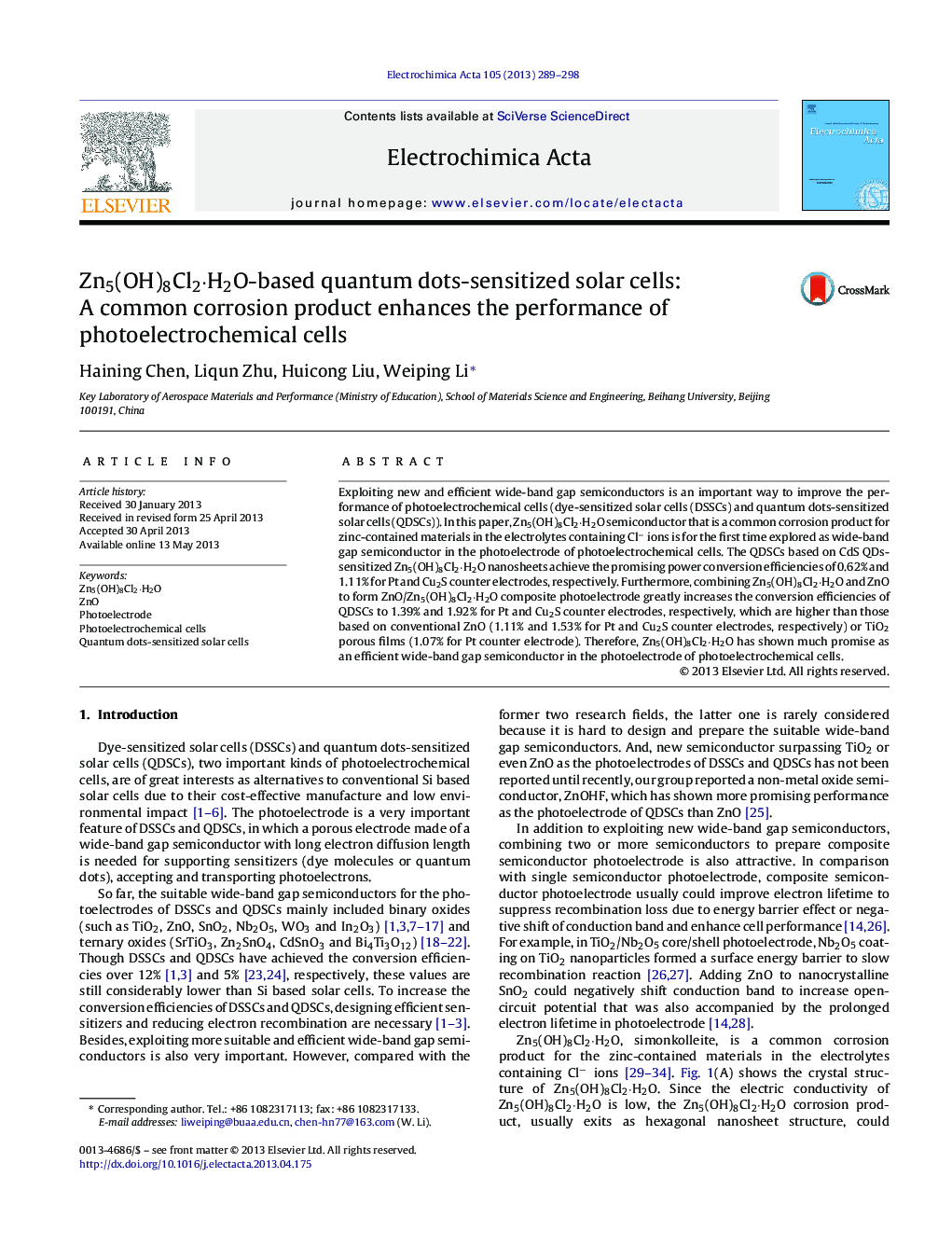| Article ID | Journal | Published Year | Pages | File Type |
|---|---|---|---|---|
| 6617481 | Electrochimica Acta | 2013 | 10 Pages |
Abstract
Exploiting new and efficient wide-band gap semiconductors is an important way to improve the performance of photoelectrochemical cells (dye-sensitized solar cells (DSSCs) and quantum dots-sensitized solar cells (QDSCs)). In this paper, Zn5(OH)8Cl2·H2O semiconductor that is a common corrosion product for zinc-contained materials in the electrolytes containing Clâ ions is for the first time explored as wide-band gap semiconductor in the photoelectrode of photoelectrochemical cells. The QDSCs based on CdS QDs-sensitized Zn5(OH)8Cl2·H2O nanosheets achieve the promising power conversion efficiencies of 0.62% and 1.11% for Pt and Cu2S counter electrodes, respectively. Furthermore, combining Zn5(OH)8Cl2·H2O and ZnO to form ZnO/Zn5(OH)8Cl2·H2O composite photoelectrode greatly increases the conversion efficiencies of QDSCs to 1.39% and 1.92% for Pt and Cu2S counter electrodes, respectively, which are higher than those based on conventional ZnO (1.11% and 1.53% for Pt and Cu2S counter electrodes, respectively) or TiO2 porous films (1.07% for Pt counter electrode). Therefore, Zn5(OH)8Cl2·H2O has shown much promise as an efficient wide-band gap semiconductor in the photoelectrode of photoelectrochemical cells.
Related Topics
Physical Sciences and Engineering
Chemical Engineering
Chemical Engineering (General)
Authors
Haining Chen, Liqun Zhu, Huicong Liu, Weiping Li,
